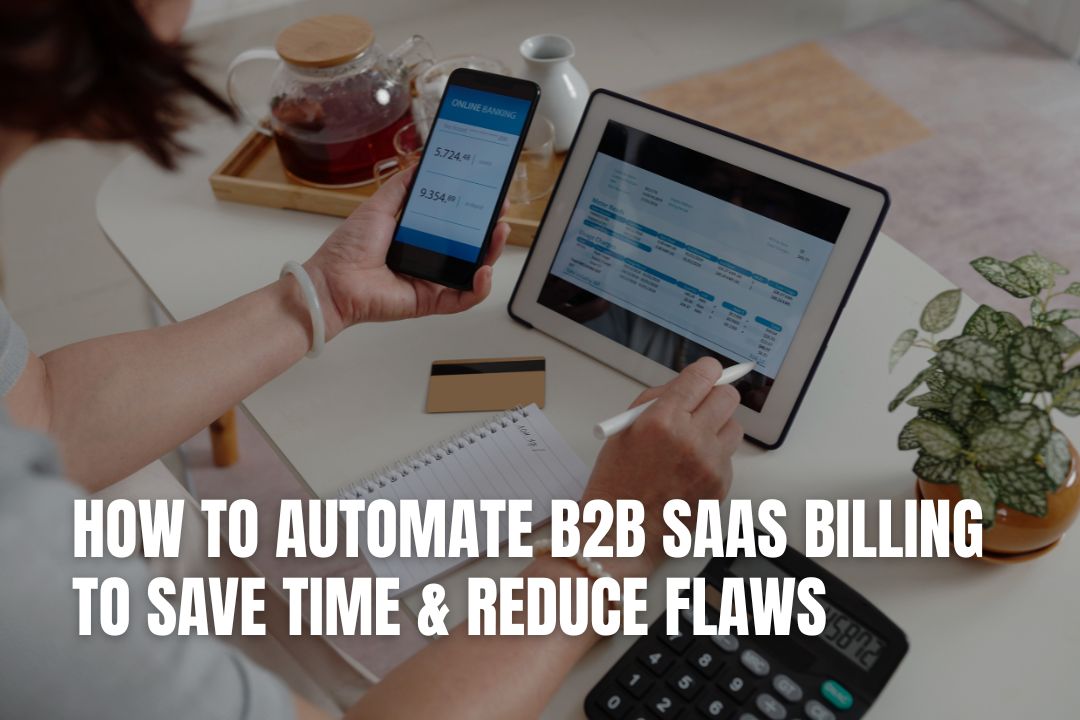
If your B2B SaaS company is still relying on manual billing processes, then you know how inefficient and complicated they can become.
Between managing subscription renewals, usage-based charges, pricing tiers, and tax compliance, even the smallest oversight can create serious billing errors.
The result?
Lost revenue, frustrated customers, and wasted hours fixing mistakes that could have been prevented.
That’s why more B2B SaaS businesses are turning to automated billing solutions. By choosing the right software for your business, you can streamline your operations, save time, and eliminate manual errors.
In this post, we’ll take you through the step-by-step process of automating your B2B SaaS billing process.
Manual billing may work when your business is smaller and has fewer customers. But as your B2B SaaS business and customer base grow, manual processes start creating operational bottlenecks.
Here’s why you should automate your billing process:
Automating your billing process is a structured approach that requires the right tools, integrations, and testing.
Here’s how to do it:
Before implementing automation, you need to understand how your current billing operations function and where they break down. Start by mapping your current billing process from start to finish. This includes:
Next, identify manual touchpoints — areas where your team still enters data, makes calculations, or transfers information between tools. These are your biggest sources of inefficiency and error, which should be your top priorities for automation.
Your billing automation is only as good as the software you choose for your business. According to Attrock, a reliable subscription management software helps you manage the entire customer lifecycle. This includes everything from signup and subscription creation to renewals, upgrades, downgrades, and cancellations.
Look for a B2B SaaS solution that supports:
Recurring payments and invoices are some of the major repetitive tasks and sources of billing errors. As SaaS experts recommend, the right B2B SaaS billing software, like Younium, can enable you to automate the entire billing cycle, from generating invoices to charging customer accounts.
Here’s how it works:
You can also add automated notifications to remind customers of upcoming renewals or expiring payment methods.
B2B SaaS billing automation works best when all your business systems are connected. Integrating your billing solution with your accounting software and CRM platforms ensures smooth data flow across departments.
For instance, when a new customer subscribes, your billing system should automatically create an invoice and record the transaction in accounting. It should then update the customer record in CRM, without any manual intervention.
You can connect your billing software with:
You don’t want to create worse problems while trying to resolve existing ones. Before fully launching your automated B2B billing system, conduct thorough tests using real-world billing scenarios, such as:
Testing helps identify errors or gaps in workflows before they affect customers or revenue recognition. Once you’re confident everything is running smoothly, train your finance, sales, and customer support teams on how the system works. Everyone should understand how to use it, interpret reports, and handle exceptions.
Automating your B2B SaaS billing process helps you eliminate repetitive manual work, reduce costly errors, and gain real-time visibility into your revenue operations.
When done right, billing automation turns time-consuming tasks into a seamless, error-free process that supports your company’s long-term financial health. Begin by understanding your current workflow, selecting the appropriate tools, and integrating them throughout your entire finance stack.
The sooner you embrace automation, the sooner you’ll free your team to drive growth and serve your customers better.
As your customer base expands, manual billing becomes inefficient and prone to errors. It creates operational bottlenecks, leads to lost revenue from mistakes, and can result in a poor customer experience, which is why solutions from providers like Beacon Inside are so valuable for scaling businesses.
Automating your billing process saves a great deal of time on administrative tasks, reduces the risk of costly human errors, improves cash flow with timely invoicing, and simplifies complex revenue recognition. It also creates a much smoother and more professional experience for your customers.
The very first step is to thoroughly assess and map out your current billing workflow. You need to understand exactly how you generate invoices, collect payments, and manage subscriptions now to identify the specific areas where automation will have the biggest impact.
You should look for a tool that supports flexible and recurring billing models, handles proration for plan changes, offers automated tax calculations, and includes dunning management to chase failed payments. Crucially, it must also integrate with your existing CRM and accounting software.
Automation ensures your customers receive accurate, timely invoices every single time. It simplifies payments and makes managing their subscription, including upgrades or downgrades, a seamless process. This reliability builds trust and strengthens customer loyalty.